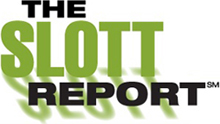We are starting to get asked whether or not there are required distributions from Roth 401(k), Roth 457(b), and Roth 403(b) accounts. The answer is - Yes. Following is our chart that compares some of the features of Roth IRAs, Roth 401(k)s, and 401(k)s. For ease, we refer to all Roth employer plans as Roth 401(k)s, but that includes Roth 403(b) and Roth 457(b) accounts as well.

Roth 401(k) Comparison Chart
| Roth IRA | Roth 401(k) | 401(k) | |
|---|---|---|---|
| Contribution/Deferral Limits* | $5,500 for 2014 plus $1,000 catch-up if you are 50 or older | $17,500** for 2014 plus $5,500 catch-up if you are 50 or older | $17,500** for 2014 plus $5,500 catch-up if you 50 or older |
| Matching Contributions | None | If the plan allows*** | If the plan allows |
| Income Limits | Yes | None | None |
| Taxability of Contributions | Contributions are after-tax | Deferrals are after-tax | Deferrals are pre-tax |
| Rollovers | Only to other Roth IRAs | Only to Roth IRAs or Roth employer plans | To most other retirement plans - To Roth IRAs; To Roth 401(ks) as of late 2010 |
| Required Distributions | None to Roth IRA owner | At age 70 1/2 (If you are still working and are not a 5% owner, distributions are deferred until you are no longer working) | At age 70 1/2 (if you are still working and are not a 5% owner, distributions are deferred until you are no longer working) |
| Non-Qualified Distributions | Use Roth ordering rules | Use pro-rata rule | Not applicable |
| Qualified Distributions | Made 5 years after date first Roth IRA was established AND after age 59 1/2, OR Death, OR Disability, OR first-time homebuyer | Made 5 years after date each Roth 401(k) was established AND after age 59 1/2, OR Death, OR Disability | Not applicable |
*An individual who has traditional IRAs and Roth IRAs can contribute a maximum total of $5,500 to all their IRAs (in 2014), not to each IRA. An employee with a 401(k) and a Roth 401(k) can defer a maximum total of $17,500 (in 2014) to both types of accounts, not to each account. If age 50 or older, the catch-up amount is added to the contribution or deferral amount.
** Contribution limits for governmental Roth 457(b) and 457(b) plans are different from other employer plans
***Matching contributions cannot be allocated to the Roth 401(k) account. They must go into the 401(k) account.
The reason you have differences between Roth IRAs and Roth 401(k)s, including required distributions from the Roth 401(k), is that the employer plan rules apply to Roth 401(k) accounts. However, you can get out of the required distributions from the Roth 401(k) by rolling those assets to a Roth IRA before the year you turn 70 ½.
- By Beverly DeVeny and Jared Trexler









3 comments:
Thanks for the clarification.
If a 5%+ owner is working at age 69 and rolls a Roth 401k (plan allows in-service distributions at age 59 1/2) to a Roth IRA, no RMDs, correct?
For Federal Government workers under the FERS that now have a Roth provision in their plan, do all the same provisions as the Roth 401(k) apply, or are there any unique rules, limitations, etc., that apply to them.
Post a Comment